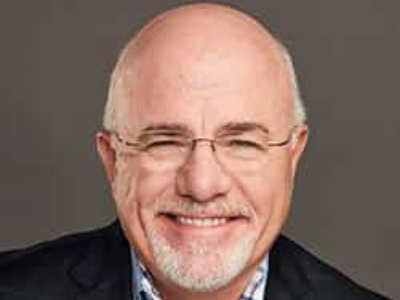Robert Redford, Oscar-winning director, actor and indie patriarch, dies at 89
News > National News

Audio By Carbonatix
7:33 AM on Tuesday, September 16
By BOB THOMAS
Robert Redford, the Hollywood golden boy who became an Oscar-winning director, liberal activist and godfather for independent cinema under the name of one of his best-loved characters, died Tuesday at 89.
Redford died “at his home at Sundance in the mountains of Utah — the place he loved, surrounded by those he loved,” publicist Cindi Berger said in a statement. No cause of death was provided.
After rising to stardom in the 1960s, Redford was one of the biggest stars of the ’70s with such films as “The Candidate,” “All the President’s Men” and “The Way We Were,” capping that decade with the best director Oscar for 1980's “Ordinary People,” which also won best picture in 1980. His wavy blond hair and boyish grin made him the most desired of leading men, but he worked hard to transcend his looks — whether through his political advocacy, his willingness to take on unglamorous roles or his dedication to providing a platform for low-budget movies.
His roles ranged from Washington Post journalist Bob Woodward to a mountain man in “Jeremiah Johnson” to a double agent in the Marvel Cinematic Universe, and his co-stars included Jane Fonda, Meryl Streep and Tom Cruise. But his most famous screen partner was his old friend and fellow activist and practical joker Paul Newman, their films a variation of their warm, teasing relationship off screen. Redford played the wily outlaw opposite Newman in 1969’s “Butch Cassidy and the Sundance Kid,” a box-office smash from which Redford's Sundance Institute and festival got its name. He also teamed with Newman on 1973’s best picture Oscar winner, “The Sting,” which earned Redford a best-actor nomination as a young con artist in 1930s Chicago.
Film roles after the ’70s became more sporadic as Redford concentrated on directing and producing, and his new role as patriarch of the independent-film movement in the 1980s and ’90s through his Sundance Institute. But he starred in 1985’s best picture champion “Out of Africa” and in 2013 received some of the best reviews of his career as a shipwrecked sailor in “All is Lost,” in which he was the film’s only performer. In 2018, he was praised again in what he called his farewell movie, “The Old Man and the Gun.”
“I just figure that I’ve had a long career that I’m very pleased with. It’s been so long, ever since I was 21,” he told The Associated Press shortly before the film came out. “I figure now as I’m getting into my 80s, it’s maybe time to move toward retirement and spend more time with my wife and family.”
Redford had watched Hollywood grow more cautious and controlling during the 1970s and wanted to recapture the creative spirit of the early part of the decade. Sundance was created to nurture new talent away from the pressures of Hollywood, the institute providing a training ground and the festival, based in Park City, Utah, where Redford had purchased land with the initial hope of opening a ski resort. Instead, Park City became a place of discovery for such previously unknown filmmakers as Quentin Tarantino, Steven Soderbergh, Paul Thomas Anderson and Darren Aronofsky.
“For me, the word to be underscored is ‘independence,’” Redford told the AP in 2018. “I’ve always believed in that word. That’s what led to me eventually wanting to create a category that supported independent artists who weren’t given a chance to be heard.
“The industry was pretty well controlled by the mainstream, which I was a part of. But I saw other stories out there that weren’t having a chance to be told and I thought, ‘Well, maybe I can commit my energies to giving those people a chance.’ As I look back on it, I feel very good about that.”
Sundance was even criticized as buyers swarmed in looking for potential hits and celebrities overran the town each winter.
“We have never, ever changed our policies for how we program our festival. It’s always been built on diversity,” Redford told the AP in 2004. “The fact is that the diversity has become commercial. Because independent films have achieved their own success, Hollywood, being just a business, is going to grab them. So when Hollywood grabs your films, they go, ‘Oh, it’s gone Hollywood.’”
By 2025, the festival had become so prominent that organizers decided they had outgrown Park City and approved relocating to Boulder, Colorado, starting in 2027. Redford, who had attended the University of Colorado Boulder, issued a statement saying that “change is inevitable, we must always evolve and grow, which has been at the core of our survival.”
Redford’s affinity for the outdoors was well captured in “A River Runs Through It” and other films and through his decades of advocacy for the environment, inspired in part by witnessing the transformation of Los Angeles into a city of smog and freeways. His activities ranged from lobbying for such legislation as the Clean Air Act and Clean Water Act to pushing for land conservation in Utah to serving on the board of the Natural Resources Defense Council.
Redford was married twice, most recently to Sibylle Szaggars. He had four children, two of whom have died — Scott Anthony, who died in infancy, in 1959; and James Redford, an activist and filmmaker who died in 2020.
Robert Redford was born Charles Robert Redford Jr. on Aug. 18, 1936, in Santa Monica, a California boy whose blond good looks eased his way over an apprenticeship in television and live theater that eventually led to the big screen.
Redford attended college on a baseball scholarship and would later star as a middle-aged slugger in 1984’s “The Natural,” the adaptation of Bernard Malamud’s baseball novel. He had an early interest in drawing and painting, then went on to study at the American Academy of Dramatic Arts, debuting on Broadway in the late 1950s and moving into television on such shows as “The Twilight Zone,” “Alfred Hitchcock Presents” and “The Untouchables.”
After scoring a Broadway lead in “Sunday in New York,” Redford was cast by director Mike Nichols in a production of Neil Simon’s “Barefoot in the Park,” later starring with Fonda in the film version. Redford did miss out on one of Nichols’ greatest successes, “The Graduate,” released in 1967. Nichols had considered casting Redford in the part eventually played by Dustin Hoffman, but Redford seemed unable to relate to the socially awkward young man who ends up having an affair with one of his parents’ friends.
“I said, ‘You can’t play it. You can never play a loser,’” Nichols said during a 2003 screening of the film in New York. “And Redford said, ‘What do you mean? Of course I can play a loser.’ And I said, ‘OK, have you ever struck out with a girl?’ and he said, ‘What do you mean?’ And he wasn’t joking.”
Even as Redford championed low-budget independent filmmaking, he continued to star in mainstream Hollywood productions himself, scoring the occasional hit such as 2001’s “Spy Game,” which co-starred Brad Pitt, an heir apparent to Redford’s handsome legacy whom he had directed in “A River Runs Through It.”
Ironically, “The Blair Witch Project,” “Garden State,” “Napoleon Dynamite” and other scrappy films that came out of Sundance sometimes made bigger waves — and more money — than some Redford-starring box-office duds like “Havana,” “The Last Castle” and “An Unfinished Life.”
Redford also appeared in several political narratives. He satirized campaigning as an idealist running for U.S. senator in 1972’s “The Candidate” and uttered one of the more memorable closing lines, “What do we do now?” after his character manages to win. He starred as Woodward to Hoffman’s Carl Bernstein in 1976’s “All the President’s Men,” the story of the Washington Post reporters whose Watergate investigation helped bring down President Richard Nixon.
With 2007’s “Lions for Lambs,” Redford returned to directing in a saga of a congressman (Tom Cruise), a journalist (Meryl Streep) and an academic (Redford) whose lives intersect over the war on terrorism in Afghanistan.
His biggest filmmaking triumph came with his directing debut on “Ordinary People,” which beat Martin Scorsese’s classic “Raging Bull” at the Oscars. The film starred Donald Sutherland and Mary Tyler Moore as the repressed parents of a troubled young man, played by Timothy Hutton, in his big screen debut. Redford was praised for casting Moore in an unexpectedly serious role and for his even-handed treatment of the characters, a quality that Roger Ebert believed set “the film apart from the sophisticated suburban soap opera it could easily have become.”
Redford’s other directing efforts included “The Horse Whisperer,” “The Milagro Beanfield War” and 1994's “Quiz Show,” the last of which also earned best picture and director Oscar nominations. In 2002, Redford received an honorary Oscar, with academy organizers citing him as “actor, director, producer, creator of Sundance, inspiration to independent and innovative filmmakers everywhere.”
“The idea of the outlaw has always been very appealing to me. If you look at some of the films, it’s usually having to do with the outlaw sensibility, which I think has probably been my sensibility. I think I was just born with it,” Redford said in 2018. “From the time I was just a kid, I was always trying to break free of the bounds that I was stuck with, and always wanted to go outside.”
___
This story has been corrected to update Redford's birth year to 1936, not 1937.
___
Associated Press journalists Hillel Italie, Jake Coyle and Mallika Sen contributed to this report. Bob Thomas, a longtime Associated Press journalist who died in 2014, was the principal writer of this obituary.










